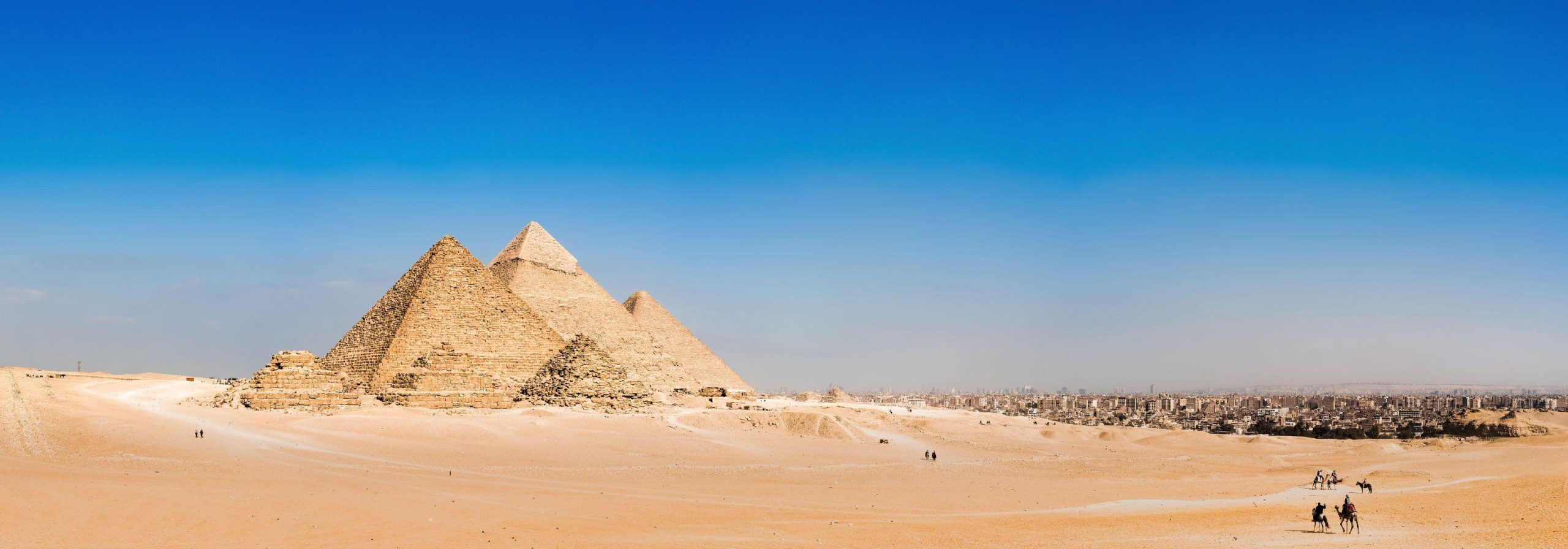
Giza
Giza, located on the outskirts of Cairo, Egypt, is a historic city renowned for its ancient monuments, most notably the Giza Pyramid Complex. Here are key features and aspects of Giza:
- Giza Pyramid Complex: The Giza Plateau is home to the iconic pyramids, built during the Fourth Dynasty of the Old Kingdom of Ancient Egypt. The three main pyramids are the Pyramid of Khufu (also known as the Great Pyramid and one of the Seven Wonders of the Ancient World), the Pyramid of Khafre, and the Pyramid of Menkaure. The Great Sphinx of Giza, a colossal limestone statue with a lion’s body and a pharaoh’s head, is also part of the complex.
- Great Pyramid of Khufu: The largest of the pyramids, the Great Pyramid of Khufu, is a marvel of ancient engineering and construction. It was built as a tomb for Pharaoh Khufu and is characterized by its immense size and precision in design.
- Pyramid of Khafre: This pyramid is slightly smaller than the Great Pyramid but appears taller due to the elevation on which it was built. The Pyramid of Khafre is notable for retaining some of its original casing stones at the top.
- Pyramid of Menkaure: The smallest of the three main pyramids, the Pyramid of Menkaure is dedicated to Pharaoh Menkaure. It is distinguished by its three tiers and a granite sarcophagus in its burial chamber.
- Solar Boat Museum: Adjacent to the Great Pyramid, the Solar Boat Museum houses a reconstructed boat believed to have been buried for Pharaoh Khufu’s use in the afterlife. The boat was discovered in a pit near the pyramid.
- Giza Plateau: The Giza Plateau is a vast area that includes not only the pyramids and the Sphinx but also various smaller pyramids, mastabas (burial structures), and cemeteries. The entire plateau served as a necropolis for the Pharaohs of the Fourth Dynasty.
- Sound and Light Shows: Giza often hosts sound and light shows in the evening, offering visitors a dramatic presentation of the history and significance of the pyramids and Sphinx.
- Archaeological Discoveries: Ongoing archaeological work in the Giza region continues to reveal new insights into ancient Egyptian civilization. Researchers are uncovering tombs, artifacts, and additional structures that contribute to our understanding of the area’s historical significance.
- Visitor Center and Facilities: Giza has a visitor center that provides information, maps, and facilities for tourists exploring the pyramids. The site attracts millions of visitors each year, making it one of Egypt’s most visited archaeological sites.
Giza stands as a testament to the architectural and engineering prowess of ancient Egypt, drawing visitors from around the world to marvel at its monumental structures and delve into the mysteries of the past.